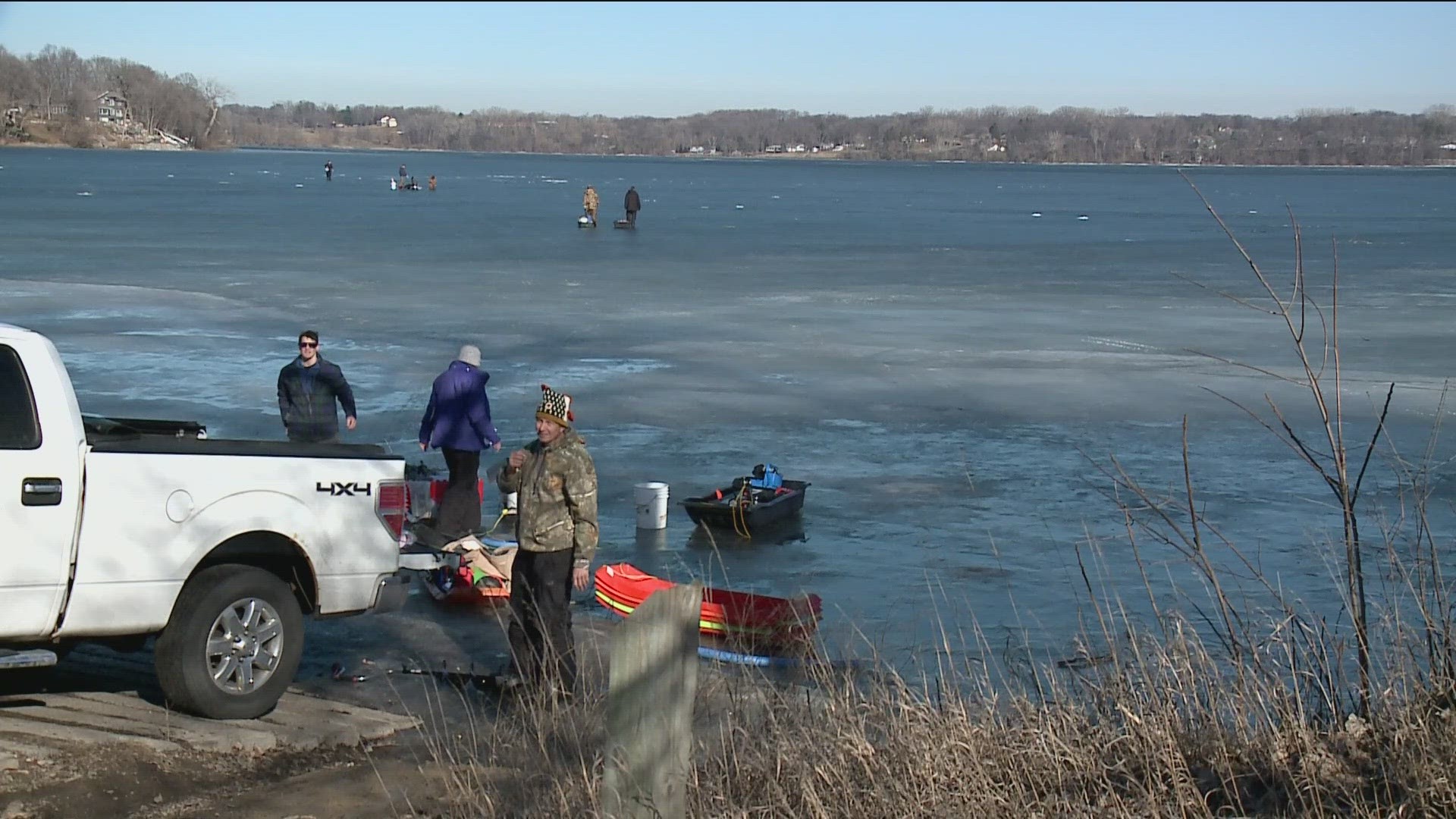MINNEAPOLIS, Minnesota — It hit 55 degrees Fahrenheit at MSP on Wednesday — the warmest day in January since 1981.
At the St. Anthony Falls spillway, there's two to three times more flow right now compared to last year or a typical year.
"The flow is really important. Normally this time of year, much of the river is frozen over and really only moving water over the spillway of St. Anthony Falls," said Andy Erickson, a research manager at the University of Minnesota's St. Anthony Falls Laboratory (SAFL).
Erickson's research focuses on stormwater runoff and water quality, trying to protect Minnesota's lakes, rivers and groundwater.
This mild winter has meant less salt on our roads and sidewalks. According to the Minnesota Department of Transportation, as of last week, it has used 65,000 tons of rock salt statewide this winter season. At this same point during last year's rough winter, MnDOT had used 163,000 tons.
"The hard part about this winter is if it stays warm, we generally use less salt because we don't have freezing rain; we don't have snow and ice events. So overall, this winter could be a net benefit of less salt and less environmental impacts. However, if we have more events of freeze and thaw, that requires more salt to keep the roads safe," Erickson said.
The Minnesota Pollution Control Agency said high amounts of chloride - an ingredient in de-icing salt - are toxic to fish and aquatic life. Once in the water, there is no feasible way to remove it.
A U of M study found that about 78% of salt applied in the Twin Cities for winter maintenance is either transported to groundwater or remains in the local lakes and wetlands.
"Road salt is a really challenging pollutant because it moves with the water and when we have warm weather, more of that water can actually infiltrate into the ground and get to our groundwater, our drinking water supplies," Erickson said. "We have more water flowing in our rivers, which transports that salt to our lakes and inland waters, and it can really transport these pollutants very far and quickly in the winter."
That applies to other pollutants, as well.
"We can see sediment; we can see contaminants of emerging concerns... some of these synthetic human-made chemicals, fertilizers, pesticides, even pharmaceuticals we find in the rivers," Erickson said.
Work at SAFL includes looking into other chemicals, besides sodium chloride, that could be used in the winter and might have less of an environmental impact. Researchers are also studying the transport of some of these pollutants through the environment.
"We're also doing work on climate change. How often might warm winters be persistent here in Minnesota? Or how often might we see warm winters here in Minnesota?" Erickson said. "And how might that affect how pollutants move through our environment that have impacts?"
The Minnesota DNR did not return KARE's request for comment in time for this story but you can find more information on how climate trends are affecting lakes and rivers, here.
Watch more local news:
Watch the latest local news from the Twin Cities and across Minnesota in our YouTube playlist:

